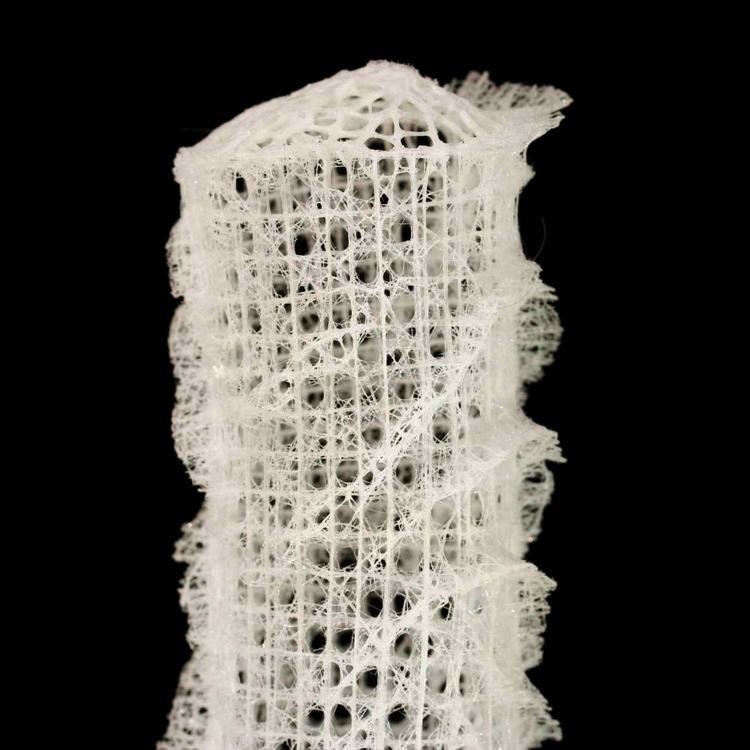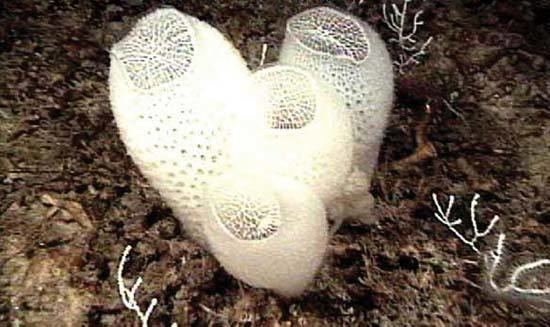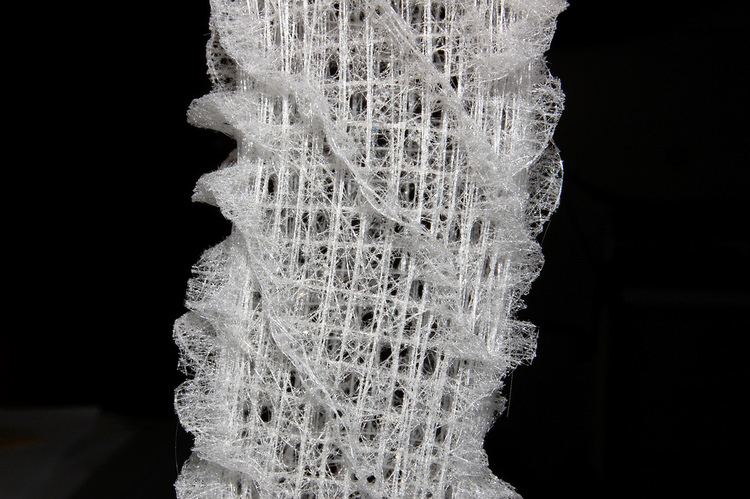Rank Species | Order Lyssacinosidea Genus Euplectella Higher classification Euplectella | |
 | ||
Similar Euplectella, Hexactinellid, Euplectellidae, Demosponge, Calcareous sponge | ||
The Venus' flower basket, or Euplectella aspergillum is a hexactinellid sponge in the phylum Porifera inhabiting the deep ocean. In traditional Asian cultures, this particular sponge (in a dead, dry state) was given as a wedding gift because the sponge symbiotically houses two small shrimp, a male and a female, who live out their lives inside the sponge. They breed, and when their offspring are tiny, the offspring escape to find a Venus' flower basket of their own. The shrimp inside the basket clean it and, in return, the basket provides food for the shrimp by trapping it in its tissues and then releasing wastes into the body of the sponge for the shrimp. It is also speculated that the bioluminescent light of bacteria harnessed by the sponge may attract other small organisms which the shrimp eat. In Japan they symbolise the idea "till death us do part".
Contents

They were also extremely popular in Victorian England, and one could easily fetch five guineas, equivalent to over £500 today.

Occurrence

E. aspergillum is found in a small area of the sea nearby the Philippine Islands. Similar species occur near Japan and in other parts of the western Pacific Ocean and the Indian Ocean.
Morphology

The body structure of these animals is a thin-walled, cylindrical, vase-shaped tube with a large central atrium. The body is composed entirely of silica in the form of 6-pointed siliceous spicules, which is why they are commonly known as glass sponges. The spicules are composed of 3 perpendicular rays giving them 6 points. Spicules are microscopic, pin-like structures within the sponge’s tissues that provide structural support for the sponge. It is the combination of spicule forms within a sponge’s tissues that helps identify the species. In the case of glass sponges the spicules "weave" together to form a very fine mesh which gives the sponge’s body a rigidity not found in other sponge species and allows glass sponges to survive at great depths in the water column.
Optical fibers and solar cells
The glassy fibers that attach the sponge to the ocean floor, 5–20 cm long and thin as human hair, are of interest to fiber optics researchers. The sponge extracts silicic acid from seawater and converts it into silica, then forms it into an elaborate skeleton of glass fibers. Other sponges such as the orange puffball sponge (Tethya aurantium) can also produce glass biologically. The current manufacturing process for optical fibers requires high temperatures and produces a brittle fiber. A low-temperature process for creating and arranging such fibers, inspired by sponges, could offer more control over the optical properties of the fibers. These nano-structures are also potentially useful for the creation of more efficient, low-cost solar cells.
Material strength
These sponges skeletons have complex geometric configurations, which have been extensively studied for their stiffness, yield strength, and minimal crack propagation. An aluminum tube (aluminum and glass have similar elastic modulus) of equal length, effective thickness, and radius, but homogeneously distributed, has 1/100th the stiffness.
